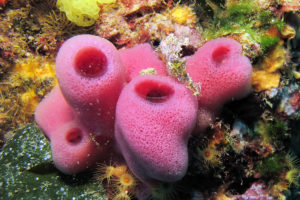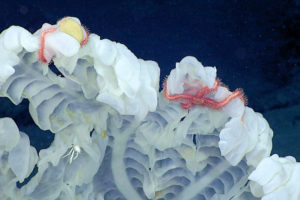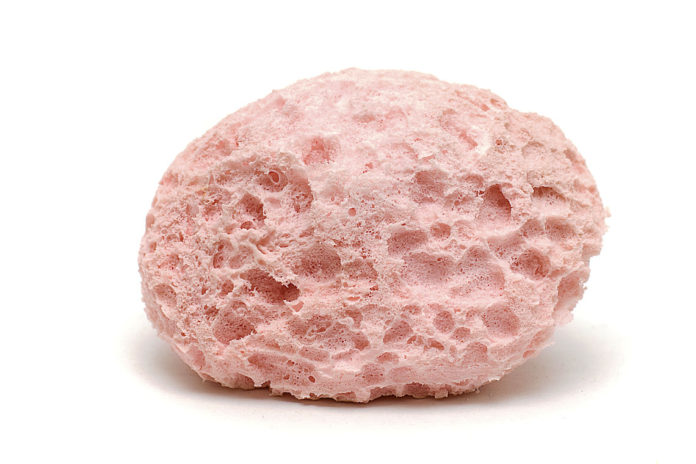Basics: Phylum Porifera Traits and Classification
Sponges belong to the phylum Porifera. One of the phylum Porifera traits is being multicellular. This means that they have many cells. Sometimes the cells have special functions. However, sponge cells do not make tissues or organs like other animals. Therefore, sponges are the most simple animal.
Sponges are a tube through which water flows. Water flows in from the bottom and out the top. Their cells absorb oxygen from this water to breathe. The cells also filter out bacteria from the water. Bacteria are a major food for sponges. Last, waste materials pass out of the cells into the water.
There are over 5,000 different species. By and large, sponges are marine animals. This means that they live in the sea. However, about 150 species live in fresh water. Sponges are located in polar, temperate and tropical waters.
There are three basic classes of sponges. These are the Calcarea, Glass sponges, and Demosponges.
Phylum Porifera Traits
Multicellular Organisms
Sponges are multicellular. However, their cells do not form tissues or organs. As a result, sponges do not have digestive, respiratory, or nervous systems. In addition, they lack muscles or a mouth.

[Click on the thumbnail image for a full-sized image].
The sponge is a simple tube of cells. Water flows in from pores in the tube. It passes through the tube. Then it exits from the top of the tube. This flow of water enables the sponge to breathe, consume food, and eliminate wastes.
The body cavity through which water moves is the spongocoel. The cavity has a lining of specialized cells called choanocytes. Choanocytes have flagella that are like whips. The flagella beat the water. And, this creates a current of water. In the end, water exits through an osculum. The osculum is an opening at the top of the sponge.
Respiration, Digestion and Excretion
Respiration: A respiratory system manages the exchange of oxygen and carbon dioxide. This exchange is between sponge and environment. Sponges do not have a system with organs. Instead respiration occurs directly between cells and their environment.
Water moving through the body cavity contains oxygen. Cells absorb the oxygen through diffusion. In contrast carbon dioxide diffuses out of the cell into the water. Oxygen is needed to provide energy. Carbon dioxide is waste material to the sponge.
Digestion and Excretion: The sponge’s body cavity functions like a digestive system. A digestive system breaks down food into nutrients for the body. It eliminates waste products.
As water flows through the cavity, choanocytes filter the water. Filtering captures particles such as bacteria and algae. Amoebocytes digest these particles. Amoebocytes are a specialized cell. The cells then carry nutrients to all parts of the sponge.
Finally, the water flows in the body cavity function as an excretory system. The cell’s waste products are released into the water. In the end, the waste products are eliminated through the osculum.
Reproduction

[Click on the thumbnail image for a full-sized image].
Sexual Reproduction: In animals, the reproductive system are those organs that permit an animal to reproduce. Sponges lack reproductive organs. Choanocytes produce male sperm cells. The sperm cells then form cysts. Cysts eventually expel the sperm cells into the body cavity. From there, the sperm cells are released into the sea through the osculum.
On the other hand, amoebocytes produce female egg cells. These eggs are then fertilized by sperm cells from other sponges.
Asexual Reproduction: Sponges also use asexual reproduction. As pieces of a sponge break off they can regenerate into a whole sponge. Some sponges produce buds which can grow into whole sponges.
Other Phylum Porifera Traits
Movement: Porifera are sessile. In other words, sponges attach to rocks and do not move around.
Symmetry: Sponges do not have symmetry.
Phylum Porifera Classification
The phylum Porifera can be broken down into three main classes. These are the Demospongiae, Calcarea, and Hexactinellida classes.
Class Demospongieae

[Click on the thumbnail image for a full-sized image].
A majority of sponges belong to the Demospongieae class. These sponges have a soft body that covers a hard inner shell. The shell is calcium carbonate.
The amoebocyte cells have pigments. As a result these sponges have bright colors. These sponges can live up to 1,000 years. Demosponges are used as bath sponges.
Class Calcarea
Calcarea sponges are small. A typical height may be 10 centimeters. They have spicules made of calcium carbonate. A spicule provides structure for a sponge. They provide support the sponge’s structure. Second, spicules provide defense.
Calcarea sponges are found in shallow ocean waters. They are found worldwide, but most live in tropical coastal areas.
Class Hexactinellida
Glass sponges belong to the Hexactinellida class. They have spicules with a hexagon shape. The spicules fuse together to form a skeleton. The skeleton resembles glass. Therefore they are named glass sponges.
These sponges are found in deep Antarctic waters.
Reflections
Vocabulary
Notes
- Phylum Porifera represents sponges. These are simple multicellular animals.
- Sponges lack tissue and organs. Sponges use specialized cells to perform the function of organs.
- There are three classes of sponges.
Bibliography
- A Animals Study Guide
- About Animals
- Porifera (Sponges), Marine Education Society of Australasia.

